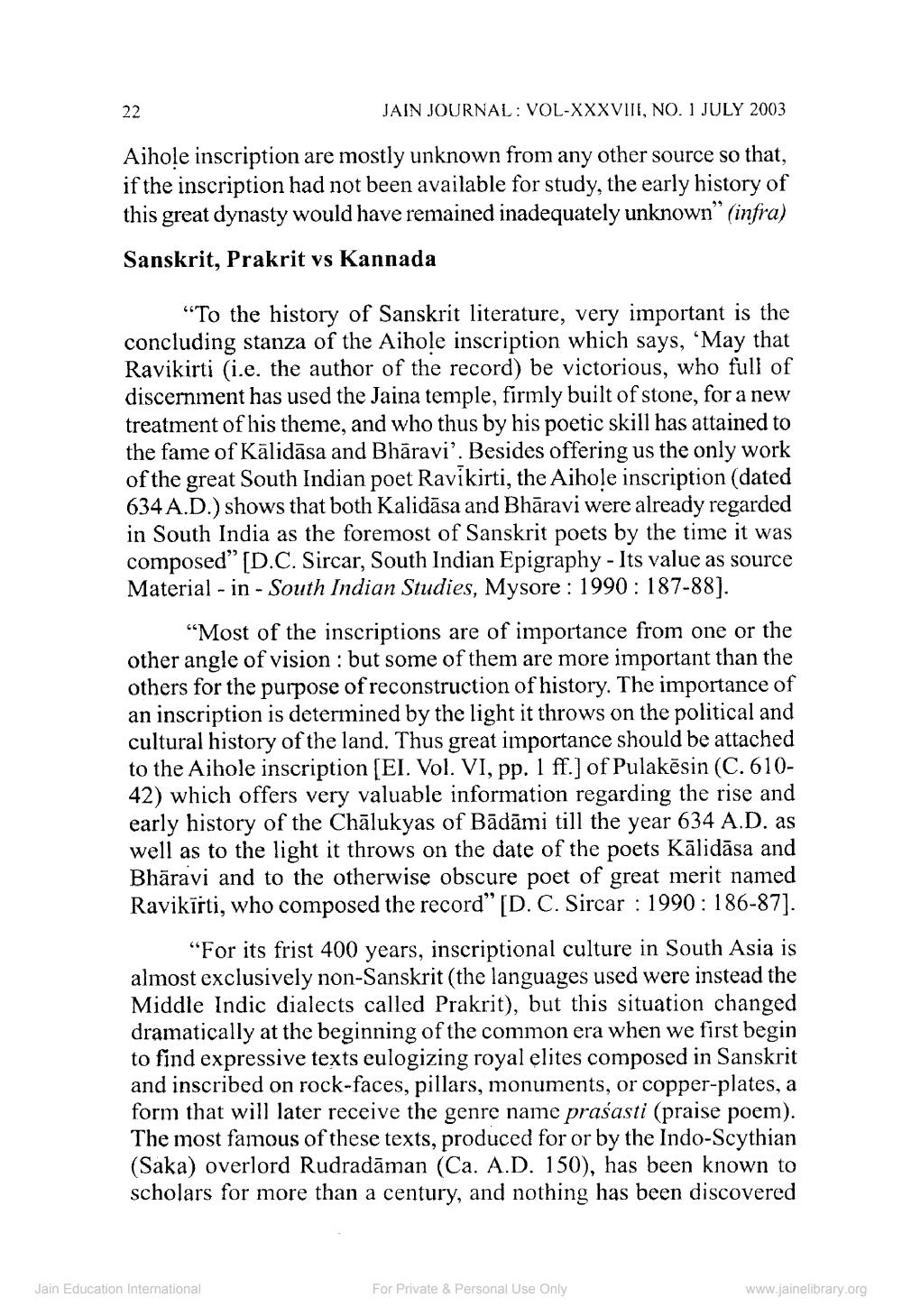________________
22
JAIN JOURNAL: VOL-XXXVIII, NO. 1 JULY 2003
Aihole inscription are mostly unknown from any other source so that, if the inscription had not been available for study, the early history of this great dynasty would have remained inadequately unknown” (infra) Sanskrit, Prakrit vs Kannada
"To the history of Sanskrit literature, very important is the concluding stanza of the Aihole inscription which says, “May that Ravikirti (i.e. the author of the record) be victorious, who full of discernment has used the Jaina temple, firmly built of stone, for a new treatment of his theme, and who thus by his poetic skill has attained to the fame of Kālidāsa and Bhāravi’. Besides offering us the only work of the great South Indian poet Ravikirti, the Aihole inscription (dated 634 A.D.) shows that both Kalidāsa and Bhāravi were already regarded in South India as the foremost of Sanskrit poets by the time it was composed" [D.C. Sircar, South Indian Epigraphy - Its value as source Material - in - South Indian Studies, Mysore: 1990: 187-88).
"Most of the inscriptions are of importance from one or the other angle of vision : but some of them are more important than the others for the purpose of reconstruction of history. The importance of an inscription is determined by the light it throws on the political and cultural history of the land. Thus great importance should be attached to the Aihole inscription (EI. Vol. VI, pp. 1 ff.] of Pulakësin (C.61042) which offers very valuable information regarding the rise and early history of the Chālukyas of Bādāmi till the year 634 A.D. as well as to the light it throws on the date of the poets Kālidāsa and Bhäravi and to the otherwise obscure poet of great merit named Ravikīrti, who composed the record” [D. C. Sircar : 1990: 186-87].
"For its frist 400 years, inscriptional culture in South Asia is almost exclusively non-Sanskrit (the languages used were instead the Middle Indic dialects called Prakrit), but this situation changed dramatically at the beginning of the common era when we first begin to find expressive texts eulogizing royal elites composed in Sanskri and inscribed on rock-faces, pillars, monuments, or copper-plates, a form that will later receive the genre name prasasti (praise poem). The most famous of these texts, produced for or by the Indo-Scythian (Saka) overlord Rudradāman (Ca. A.D. 150), has been known to scholars for more than a century, and nothing has been discovered
Jain Education International
For Private & Personal Use Only
www.jainelibrary.org




